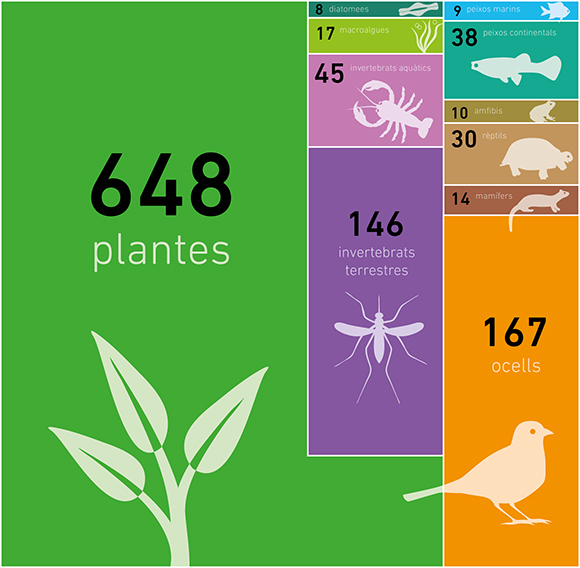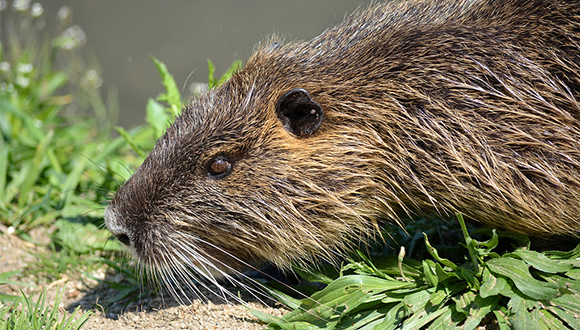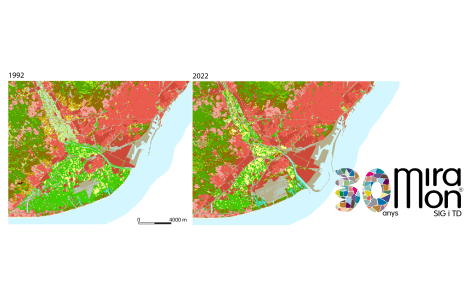Project shows 10% of exotic species in Catalonia are invasive

The data base of the research project EXOCAT, commissioned by the Catalonian government and coordinated by CREAF, has more than 1,100 exotic species registered in Catalonia, 111 of which are considered as invasive. This data base is a benchmark tool for improving policy on biological invasions and their control.

In a press conference, the Catalonian Department of Territory and Sustainability and CREAF have together unveiled the first open-access data base of exotic species in Catalonia where species are classified according to degree of establishment and invasiveness. This data base listing more than 1,100 exotic species is part of the EXOCAT project which has been issuing reports since 2012.
“Not all exotic species are invasive. It is important to remember that, for an exotic species to become invasive, it has to become successfully established, meaning that it is reproducing in the region, and it also has to extend its range and increase in numbers,” explains Joan Pino, CREAF Deputy Director and head of the EXOCAT project. Often, the process of invasion is only a matter of time, and for this reason experts say that rapid response and prevention are critical and may be the only ways to avoid the expansion of these species and limit their impacts on biodiversity, the economy, and public health.

Species profiles and maps of distribution
The EXOCAT data base, which can be consulted through the project web site, provides a variety of information about the more than 1,100 exotic species identified in Catalonia to date, including species profiles and maps of their distribution. Of the listed species, 38% have not yet formed stable populations. However, 111 species (10% of the total) have been able to extend their ranges throughout Catalonia and are categorized as invasive. When these statistics are compared with data from 2012, it is seen that the number of invasive species has remained relatively stable since in that year 110 (or 12%) of the total of 939 listed exotic species were considered invasive. On the other hand, 14% of listed species have become established but do not show signs of expansion. However, experts warn that a third of the species are listed simply because their presence is known, but that their current distributions and rates of expansion are unknown.
Global warming, transformation of the landscape, and trans-national movements of people and commerce have all favored the arrival and establishment of exotic species. Between 2012 and 2016 EXOCAT added 161 new species, some of which can be considered as new introductions, while it is possible that the other species were present but had gone undiscovered until now.

Exotic species are most common in metropolitan regions and coastal areas where high (human) population densities and long histories of commercial activities favor the arrival of new species. Also, mild climates and dramatic transformation of the landscape (urbanization, cropland abandonment and conversion, etc.) offer many opportunities to colonizing species.
Recently, many invertebrate species have arrived and expanded their range, including the tiger mosquito (Aedes albopictus), the box tree moth (Cydalima perspectalis) and the yellow sugarcane aphid (Sipha flava). Perhaps the most well-known recent arrival is the Asian hornet (Vespa velutina), detected in the Alt Empordà region in 2011 (possibly arriving from southern France) and which has now expanded throughout the northeastern Catalonian counties. This hornet can cause severe impacts on the beekeeping sector due to the high mortalities it causes in honeybees.

Predictive model
The case of the Asian hornet underscores the important role that EXOCAT may play in the management of biological invasions. As a part of the project, CREAF created a predictive model of risk of invasion by the hornet; the model was able to identify the most vulnerable regions and the most appropriate prevention and control measures to be undertaken. The model has been adopted nationally and is included in the Strategy for control, management, and possible eradication of the Asian hornet in Spain.
Among exotic mammals, of particular note is the coypu (Myocastor coypus), a South American rodent which was detected in Catalonia in the 1970s but was not able to form stable populations. However, beginning in 2010, EXOCAT data show an incipient but troubling process of colonization from Southern France (where the species is quite abundant) into the province of Girona. It has now expanded its range throughout the Alt Empordà region, has well-established populations in Empordà wetlands, and has been sighted in the middle course of the Fluvià river and in Garrotxa and l’Estany counties.

Searching for new collaborators
It is hoped that in the near future EXOCAT will become an important Catalonian node for the soon-to-be-established Spanish Exotic Species Alert Network. This network will include detection and early response protocols, measures which are proven to be effective in the control of biological invasions. However, it will be necessary to expand and maintain the network of collaborators contributing to the data base in Catalonia since this tool is used in the execution of the protocols.
It is important to keep in mind that data compiled in EXOCAT have been provided by more than 100 experts including scientists, technicians, and many devoted naturalists. In order to accommodate this data collection structure, in the near future EXOCAT will have new tools which will allow government technicians and even citizens to contribute data to the system.
Video of the press conference announcing the EXOCAT project
Noticias relacionadas

El IPBES publica dos informes para transformar la forma en que nos relacionamos con la naturaleza, conservarla y sobrevivir

El impacto social de la investigación se consolida en la cultura científica del CREAF



